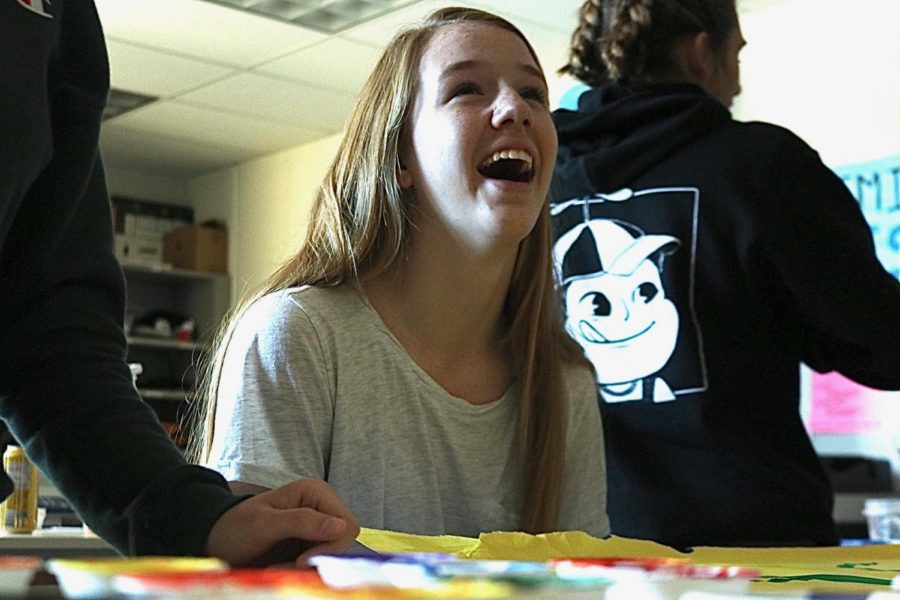Makaya Whiting smiles as she makes posters for the Associated Student Body.
Makya Whiting takes on high school living with Type 1
Starting high school is scary for most people, but it’s especially scary when you’re going to a high school in a new state with all new people. To make it even more terrifying, imagine being diagnosed with a disease that you barely know anything about, only five months before. This was reality for sophomore Makya Whiting.
Whiting was 14 when she was diagnosed with Type 1 diabetes. This meant she needed to adapt to a new lifestyle and learn about all of the responsibilities that came along with it.
“I was given a lot of information that I didn’t really understand. I was just kind of numb to everything the first couple of weeks,” Whiting said.
Although Whiting didn’t know how to react to her diagnosis, she knew there were going to be significant changes in her life.
Being diagnosed with Type 1 at an early age can lend for a smoother transition, as the treatment is integrated into their lives more quickly. In Whiting’s case, however, she had less time to process the information as she was going into high school.
Going to high school for most people means becoming more independent, and Whiting was a part of the majority that wanted to experience high school to the fullest.
In order for her to accomplish everything she wanted to, she was going to have to learn the ins and outs of Type 1.
“It’s a lot of responsibility, so I had to learn how to be really responsible really fast in order to be able to go out and do things on my own,” Whiting said.
To be prepared for any situation, Whiting has to bring the equipment necessary to manage her health; however, the management of her condition has brought her a new sense of responsibility.
Although she has freedom in some areas of her life, restrictions are present in activities that she is most passionate about.
Whiting quickly found a deep interest in basketball. Not only does the sport help her get away from the stresses of school, but provides a time during the day for her to have fun.
“I love playing basketball because it keeps me in shape and helps me stay positive throughout the day,” Whiting said.
However, playing basketball isn’t always fun and games; it’s often frustrating for Whiting because of the restrictions the disease has on the way she plays. The sport puts a lot of pressure on the body which poses a significant problem, as her body needs regular medical attention.
Playing too hard causes Whiting’s glucose levels to drop extremely quickly, which is dangerous for a person with Type 1 diabetes. In turn, she has to regularly check her glucose levels to ensure that she is healthy enough to play.
Though basketball helped Whiting through her personal struggles, she wanted to create an environment for others like her to get support. She felt that starting a club was the best way to achieve this goal.
With the help of her friend and fellow Type 1 diabetic, Madeline Cunningham, they started the Type 1 Club as sophomores.
The overarching goal of the club was to create a sense of community for Type 1 diabetics who feel they have no one to turn to for help or support. Likewise, it is also a place for those who do not have Type 1 but are merely interested in learning more about the disease.
“We are so thankful for the people in our lives, especially when we were first diagnosed, that we wanted to be able to let other people have that too,” Whiting said.
Creating a support system as well as a way to spread awareness was important because Type 1 is hugely misunderstood, which can be frustrating for those who know the real side of it.
“It’s an invisible disease. We just want to help make it more visible to everybody and know that it was not our choice to have this,” Whiting said.


